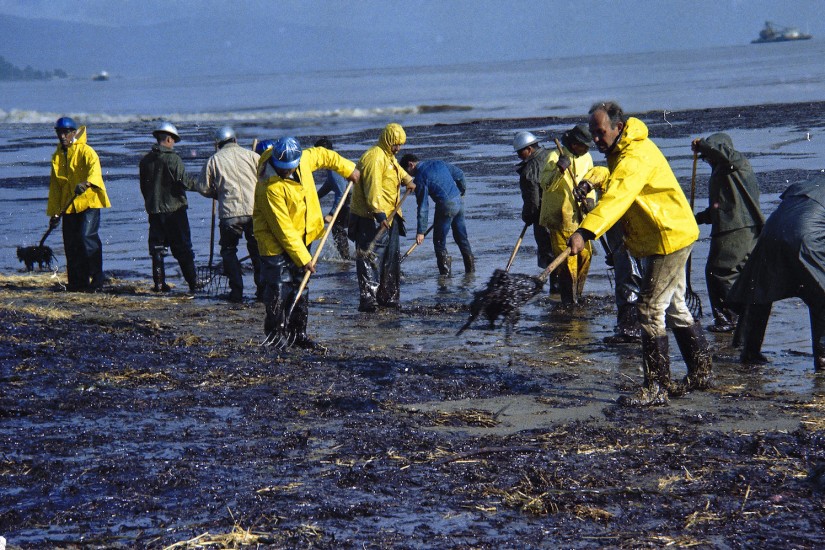Forty-nine years ago, on April 22, 1970, University of Southern California students affixed a gas mask to a statue of their mascot, Tommy Trojan, and buried an engine to symbolize the fight against pollution. In Colorado, a throng of bikers swarmed the state capitol. Volunteers picked up five tons of trash in West Virginia. All across the United States, teach-ins and demonstrations for the inaugural Earth Day would go down in history as a galvanizing moment for the environmental movement. But Earth Day’s roots lie in an earlier tragedy: a gargantuan oil spill that sullied the Santa Barbara coastline and put a national spotlight on pollution.
Fifteen months before the first Earth Day, on January 28, 1969, oil started pooling in a black, tarry slick above the sea, six miles from the postcard-perfect shores of Southern California. The community, despite its concern about permitting drilling in federal waters, hadn’t been able to weigh in on the rig known as Platform A. Union Oil persuaded the government to issue a waiver for its fifth well—other areas required protective steel casing to extend at least 300 feet below the ocean floor, but Union Oil got permission to install only 239 feet of casing for the new well.
The shortcut proved costly. The pressure prompted a blowout on the fourteenth day of drilling, jetting mud 90 feet above the platform’s floor. The company tried to staunch the oil flow from the well, but soon, oilmen noticed the sea bubbling. The buildup of pressure caused natural gas and oil to find and spew through fissures in the ocean floor. For the first 11 days of the spill, oil escaped at a rate of almost 9,000 gallons an hour. By the time Union Oil managed to stop the leakage, roughly three million gallons (4.5 Olympic swimming pools’ worth of oil) had spread over 35 miles. It ranked as the worst oil spill in the country’s history. (Fifty years later, after even more disastrous oil spills, it’s now the third-largest.)
Paul Relis, then a student at the University of California, Santa Barbara (UCSB), finagled his way onto a flight over the spill. He recounted the scene in an oral history compiled by Pacific Standard: “I remember looking straight down into this huge upwelling of black out of the ocean. And I just instantly thought, this is going to change the world.” The disaster prompted Relis to help found an ecology center, one of the earliest such environmental information hubs in the nation. The spill jolted other residents into action, too. Within the first week, local activists created a grassroots group called Get Oil Out! (GOO!) that clamored for the government to stop drilling in the Santa Barbara Channel.
